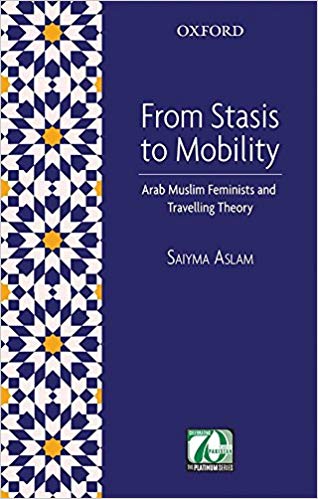Aslam’s book is an exploration of how the lives of Arab Muslim women are influenced by culture, law, religion, patriarchy, contingencies of global restructuring and its accompanying socio- economic shifts. She employs feminism and travelling theory to challenge the (re)Orientalist myths about Arab women’s supposedly exotic lives as well as indigenous structures of patriarchal domination. She argues that the lives of Arab women are marked by heterogeneity, and that any discourse about them has to take into account the forces of globalization that are altering the configurations of household, state, politics, civil society and economy. Aslam asserts that to portray them as passive victims of the patriarchy of Arab men is fallacious as is the attempt to impose anachronistic ideologies and cultural norms upon them in a world that has moved far ahead and in which Arab women play diverse roles. The main focus of the book is upon facilitating a shift from stasis to mobility for Arab women, and all that it would involve.
Aslam uses Edward Said’s idea of travelling theory—theories move to other geographic lands or temporal periods from their point of origin and undergo adaptation or modification in the process—to interrogate how feminism is received in the Arab world, and whether Arab feminism can one day be a travelling theory in its own right. She explores the works of two North African Arab women writers, Fatima Mernissi and Nawal El Saadawi, to investigate how feminism as travelling theory appears in their works, the adaptations that it undergoes and the possibility of emergence of Muslim feminism as the force that could convert stasis into mobility for women, and could itself become travelling theory.
Divided into five chapters, chapter one argues that the Arab Muslim woman is a semiotic subject, produced according to the law of supply and demand to serve various political and ideological ends. She deftly explores how colonialism projected Muslim women as oppressed and passive victims that needed saving, while indigenous discourses saw them as repositories of honour and identity in the face of colonial onslaught, and later in the nationalist, postcolonial discourse as symbols of modernity and progress. What was common to all these was that women continued to be pawns in a discourse conducted by men and for men. Women’s concerns continued to be sidelined and feminism viewed with suspicion.

